Nokia Lumia 800 Review - Nokia's Brave New Foray into WP7
by Brian Klug on January 4, 2012 7:00 AM EST- Posted in
- Smartphones
- Nokia
- windows phone 7
- Mobile
- WP7
- Lumia
- Lumia 800
I think it’s important to start out with battery life for two reasons - I end up spending a huge majority of my time doing battery life tests, and in the case of the Lumia 800 much has been written about battery-related issues. The full disclosure is that the Lumia 800 unfortunately does have some rather glaring power and charging related problems. The first Lumia 800 we were sampled suffered from a battery-related problem that caused spontaneous rebooting during use and some charging issues. This was swapped out for another that had the updated release version firmware on it. This second device is the one I spent my majority of time with, although this second device also periodically reboots, though not as much.
The second issue is one that becomes visible when you fully discharge the phone, which naturally we do a lot of while testing battery. If you discharge the phone completely, and then attempt to re-charge, occasionally the phone will go into an endless boot loop, where it powers on, starts WP7, detects that the battery is below its power-off threshold, and shut down. Then the cycle repeats. Ordinarily this isn’t a big deal, but for some reason the PMIC (Qualcomm's PM8058) doesn’t really charge the phone while this is going on. I encountered this once, and even after 3 days of charging couldn’t boot successfully until I did a hard reset with the Nokia triple finger salute. The other minor issue is that if you get the phone into this low power state, sometimes it won’t pull any current to charge the phone. It takes a few attempts and getting the phone into the right pre-boot environment for this to work properly.
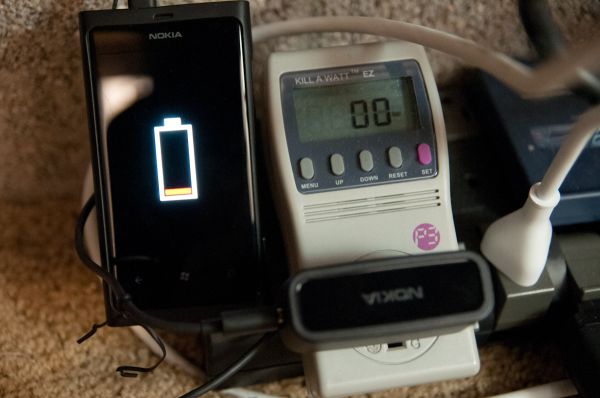 Plugged in but not drawing any current - Unplugging and replugging eventually gets the Lumia 800 to charge correctly and draw 5-6W.
Plugged in but not drawing any current - Unplugging and replugging eventually gets the Lumia 800 to charge correctly and draw 5-6W.
The latest update for the Lumia 800 as of this writing is 1600.2479.7740.11451 and includes “charging improvements” in its change-log, so it’s possible this issue has been addressed already, though there’s another update coming down the line as well. The Lumia 800 we were sampled only was being pushed “1600.2475.7720.11414” due to Microsoft’s staggered update push progress, so again it’s possible this is totally fixed.
There’s a debug menu which can be launched with the dialer code ##634#, and afterwards appears in the normal application list as well. In here you can see the real battery status, charge capacity, and even the instantaneous current draw no doubt as reported by the PMIC. While I wasn’t affected with the bug that sends the charge capacities to 0 mAh, this is still a useful menu.
So the normal corners of our battery life testing are how long the phone lasts while loading pages over 3G and WiFi, and then call time. Page load tests take place with the display set at 200 nits, though on WP7 the only display options are Low, Medium, and High (we selected Medium). We’ve added hotspot tests too which eliminate the display from being a factor, though these aren’t presently able to be tested on WP7.
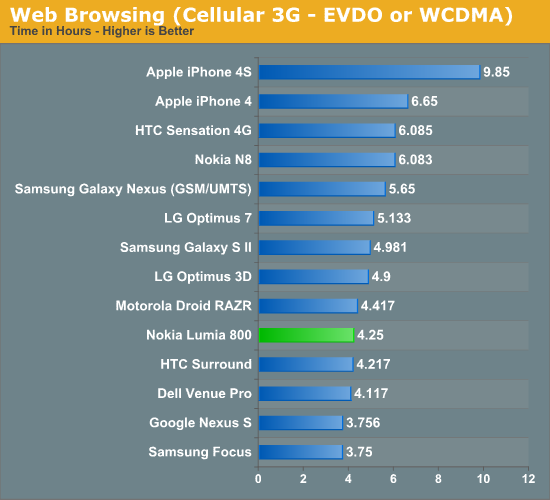
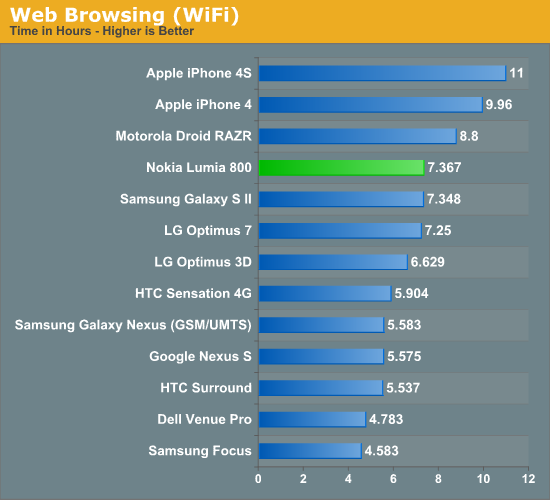
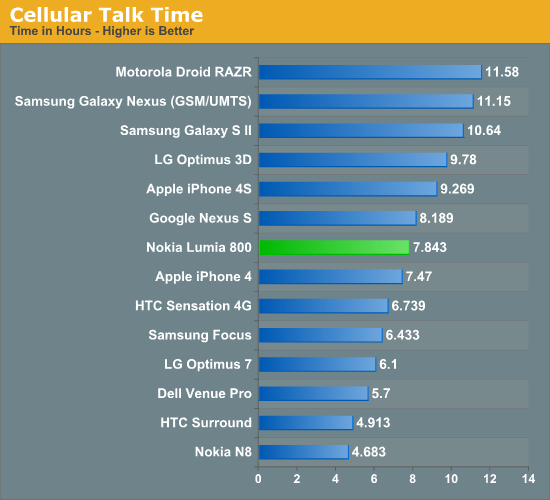
The Lumia leads the pack of WP7 devices we’ve tested in two out of the three categories, but lags the LG Optimus 7 when it comes to loading pages on cellular data. I’m decently impressed with how well the Lumia does considering its 1450mAh (5.37 Whr) battery, yet it could be better. Having an AMOLED display in conjunction with our primarily white background webpages from the page loading suite definitely makes an impact. I can’t help but wonder whether these numbers will improve or not after Nokia also updates firmware and fixes some of the battery life bugs have been publicly acknowledged.
I noticed some other subtle behavior while testing the Lumia 800. A new feature in WP7.5 “mango” is the addition of a battery saver tab under settings which optionally allows automatic pausing of background data and dimming of the display when battery gets low. In this menu you can also view battery percentage and some estimates of battery life remaining based on historical use. With the second updated Lumia 800, the phone turns off at 5%, presumably to mitigate the reboot loop that sometimes results if the phone is discharged to 0%. So there’s at least an extra 5% of battery life hanging around that no doubt will be exposed with the eventual update.


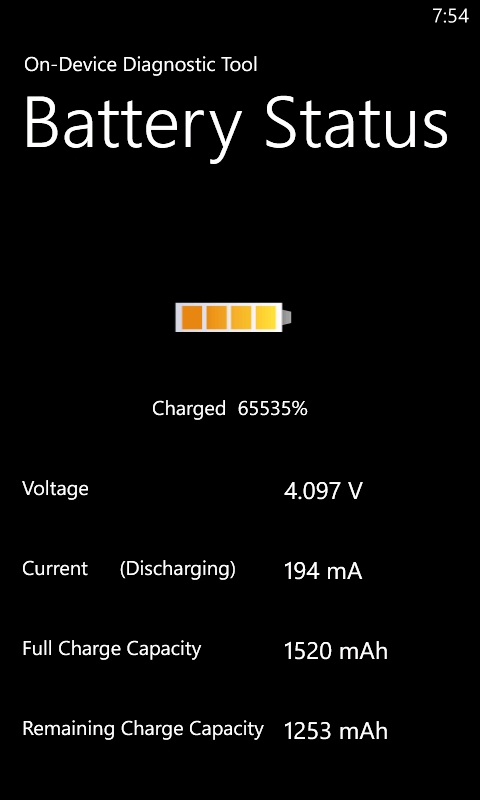
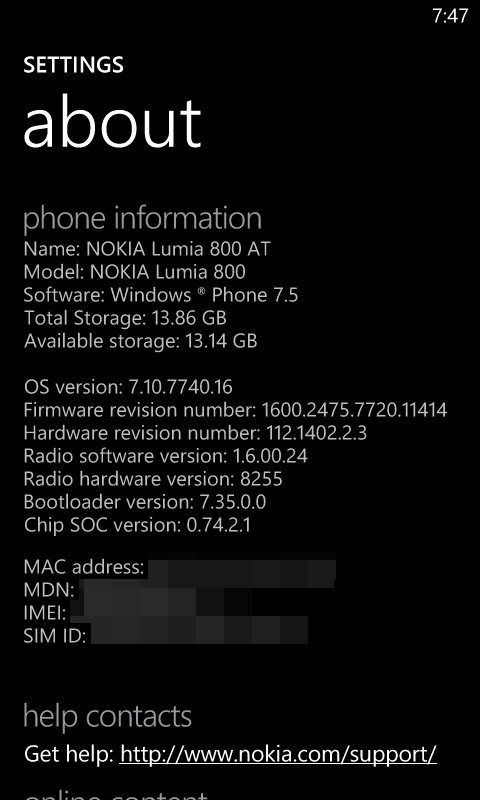
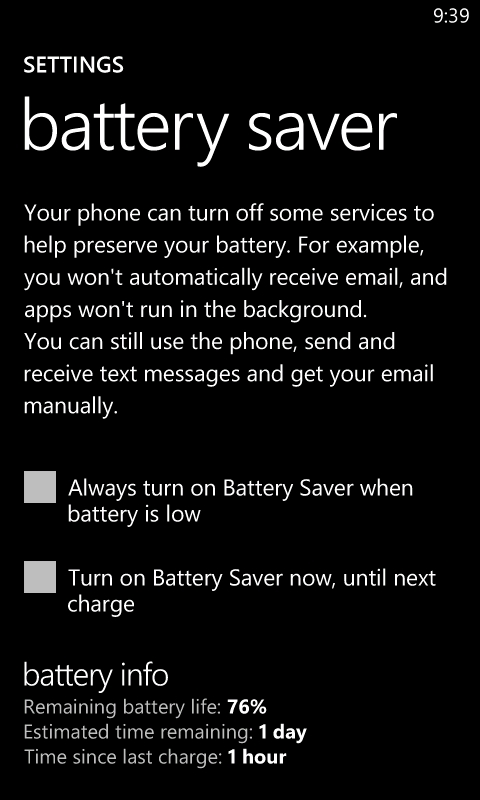








120 Comments
View All Comments
Iketh - Wednesday, January 4, 2012 - link
Look, you either write it the way I suggested above using series, or "There's a lot riding on Lumia devices, which are Nokia's first to run Windows Phone 7.5."Either way, doesn't matter.
BioTurboNick - Thursday, January 5, 2012 - link
Except that "which" proxies for "Lumia series" not "first devices".Better construction would be "Lumia series of devices, which are..." or "Lumia series, which is Nokia's first line of devices."
BioTurboNick - Thursday, January 5, 2012 - link
I take that first one back. The subject would still be the series, not the devices.Brian Klug - Wednesday, January 4, 2012 - link
Apologies, these are all fixed now :)-Brian
Iketh - Wednesday, January 4, 2012 - link
Thx, feel free to delete this thread. I'm not making these posts in the future.465thGTG - Wednesday, January 4, 2012 - link
I guess not since you demand $100 for advise like that.james.jwb - Thursday, January 5, 2012 - link
Advice :)sprockkets - Thursday, January 5, 2012 - link
Yeah, **** this site. After 12 years of reading excellent review I read no more site due to grammer (sic).Dude, **** yourself.
Starfireaw11 - Wednesday, January 4, 2012 - link
I'd been wanting to ditch my iPhone 3GS and switch over to a Windows Phone ever since WP7 launched. The problem was that the hardware that was available just plain sucked. It was like the manufacturers weren't even trying. When Nokia announced that they were going to develop WP7 devices, I figured that I would hang on to the iPhone a little longer and wait and see what they could come up with as I'd always loved the build quality of Nokia phones, even my mid '90s brick. Fortunately in the meantime, Microsoft released WP7.5, which fixed a number of issues that were a down side to the WP7 devices, which was a real plus.When the Lumia 800 finally dropped in the UK, there were no announcements of it being released anywhere else, and I wanted one pretty badly. I ordered one online from a UK carrier and had it shipped to Australia. In the meantime, I contacted my provider and ordered a Micro SIM for it.
I've had the device for about a month now and I have to agree with everything that has been said in this article - I'm really happy with it and it's a huge improvement over the iOS, the build quality is fantastic and it's got a great "feel" to it when using the hardware. I give it an honest 8.5 / 10 and feel the need to point out that the fact that it doesn't get a 9 or 9.5 are all software related (as in the battery issues mentioned, as well as deficiencies in the WP7.5 OS and Zune software).
It's a really great product and if you're sick of iOS and Android devices or if you want to try something different, you should definately give it a go!
N4g4rok - Wednesday, January 4, 2012 - link
I've never been able to agree with the poor hardware specs argument mainly because mobile operating systems differ so much in requirements.A dual core processor on an Android device makes sense because it almost eliminates some of the slowdowns you get with bloated applications or the OS itself. Apple's A5 is tailored to fit their device specifically, so we know the requirements aren't even a negotiable issue.
I don't think WP7 requires as many resources as smartphone advertising has led us to believe. Personally, i've yet to see one get seriously hung up on a 1 Ghz SoC. Even though i can see why developers themselves would be interested in powerful hardware, i think powerhouse applications really fit into a small niche of smartphone use.